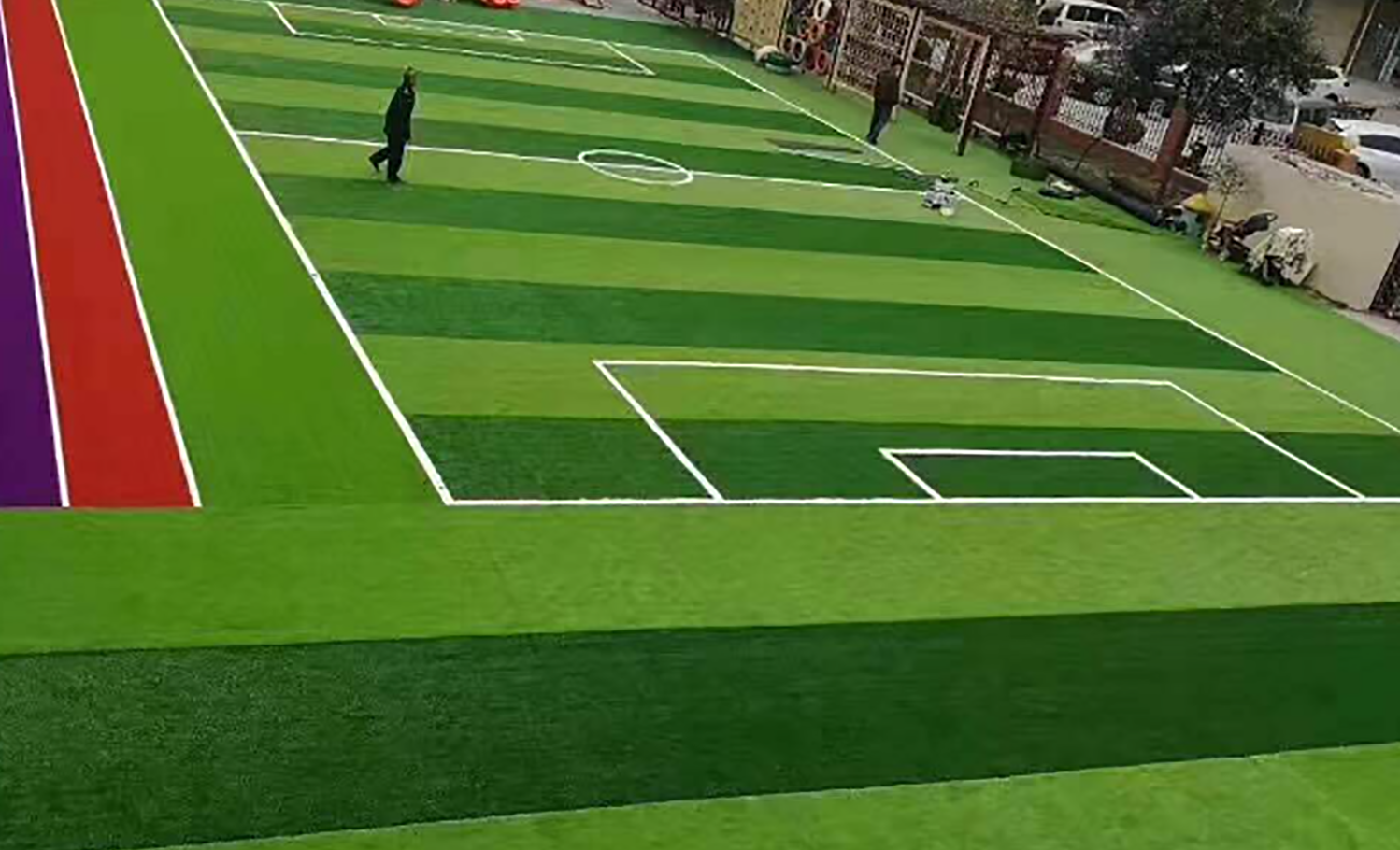
In recent years, the popularity of artificial grass has surged, with many homeowners and businesses opting for this low-maintenance alternative to natural lawns. However, as concerns about environmental sustainability continue to grow, questions arise about the ecological impact of artificial grass. Is it truly a greener choice? In this article, we’ll delve into the environmental aspects of artificial grass, examining its production, durability, water usage, and potential benefits for biodiversity.
The artificial grass market
The global artificial grass market has experienced significant growth in recent years, driven by factors such as urbanization, changing lifestyles, and a growing awareness of the benefits of artificial turf. According to a report by Fortune Business Insights, the market size was valued at USD 4.89 billion in 2021 and is projected to reach USD 11.32 billion by 2029, exhibiting a Compound Annual Growth Rate (CAGR) of 10.9% during the forecast period.
Artificial grass is widely used in various applications, including residential lawns, commercial spaces, sports fields, and playgrounds. The increasing demand for low-maintenance, water-efficient, and durable landscaping solutions has propelled the market’s growth. Additionally, advancements in manufacturing technologies have led to the production of more realistic and environmentally friendly artificial grass products.
The environmental impact of artificial grass
Production and materials
The production of artificial grass involves several environmental considerations. Traditionally, artificial grass was made from non-biodegradable materials such as polypropylene, polyethylene, and nylon. These materials are derived from fossil fuels, contributing to greenhouse gas emissions during production.
However, the industry has made significant strides towards sustainability. Many manufacturers now offer artificial grass made from recycled materials, such as recycled polyethylene and rubber infill. These innovations not only reduce the demand for virgin materials but also divert plastic waste from landfills.
Durability and lifespan
One of the key advantages of artificial grass is its durability. High-quality artificial turf can last 15 to 25 years with proper maintenance. This longevity reduces the need for frequent replacements, resulting in lower resource consumption and waste generation over time.
Furthermore, the durability of artificial grass means that it can withstand heavy foot traffic, making it a popular choice for commercial spaces and sports fields. Its resilience reduces the need for chemical treatments, such as pesticides and herbicides, which can have detrimental effects on the environment.
Water usage
Water scarcity is a pressing global issue, and traditional natural lawns often require significant amounts of water for irrigation. In contrast, artificial grass eliminates the need for regular watering, making it an attractive option for regions prone to drought or water shortages.
By replacing natural grass with artificial turf, homeowners and businesses can significantly reduce their water consumption. This conservation of water resources has positive implications for the environment, especially in water-scarce regions.
Heat island effect
Urban areas often experience the heat island effect, where built-up surfaces absorb and retain heat, leading to higher temperatures. Artificial grass can help mitigate this effect by providing a cooler surface compared to concrete or asphalt.
Additionally, some manufacturers offer artificial grass with cooling technologies, such as UV inhibitors and heat-resistant infills. These innovations can further reduce surface temperatures, benefiting both the environment and human comfort.
The benefits of artificial grass
Pollinator habitats
Natural lawns often consist of a single grass species, providing limited habitat for pollinators and other wildlife. In contrast, artificial grass can be designed to mimic the appearance of a diverse natural landscape.
By incorporating different blade heights, colors, and textures, artificial grass can create visually appealing and ecologically beneficial habitats for pollinators. This diversity can attract bees, butterflies, and other beneficial insects, supporting biodiversity in urban environments.
Carbon footprint
While the production of artificial grass does involve carbon emissions, its long lifespan and low maintenance requirements can offset these emissions over time. By reducing the need for chemical treatments, mowing, and watering, artificial grass can help lower the carbon footprint associated with traditional natural lawns.
Furthermore, some manufacturers are committed to carbon neutrality, investing in reforestation and renewable energy projects to offset their emissions. Choosing products from environmentally conscious companies can further enhance the sustainability of artificial grass.
Soil health
Traditional lawns often require regular aeration and dethatching to maintain healthy soil. These practices can disturb the soil ecosystem and disrupt beneficial microorganisms. Artificial grass eliminates the need for soil disturbance, allowing the underlying soil to remain undisturbed.
Additionally, some artificial grass products incorporate permeable backing materials that allow water to drain through, reducing the risk of waterlogging and promoting healthy soil conditions. This design can benefit both the grass and the soil, supporting a balanced ecosystem.
Maintenance
Maintaining a natural lawn often involves the use of chemical fertilizers, herbicides, and pesticides, which can have harmful effects on the environment. Artificial grass requires minimal maintenance, reducing the need for these chemicals.
Regular brushing, rinsing, and occasional infill replenishment are the primary maintenance tasks for artificial grass. By minimizing chemical use, artificial grass helps protect water quality and reduce the risk of chemical runoff into nearby ecosystems.
Conclusion
In conclusion, the environmental impact of artificial grass is a complex issue with both positive and negative aspects. While its production and disposal raise concerns, its durability, water-saving benefits, potential for biodiversity enhancement, and low maintenance requirements offer significant environmental advantages. Ultimately, the decision to use artificial grass should consider local conditions, specific needs, and a commitment to sustainable practices. By choosing high-quality, environmentally friendly products and supporting manufacturers with sustainable initiatives, we can make informed choices that align with our values and contribute to a greener future.







